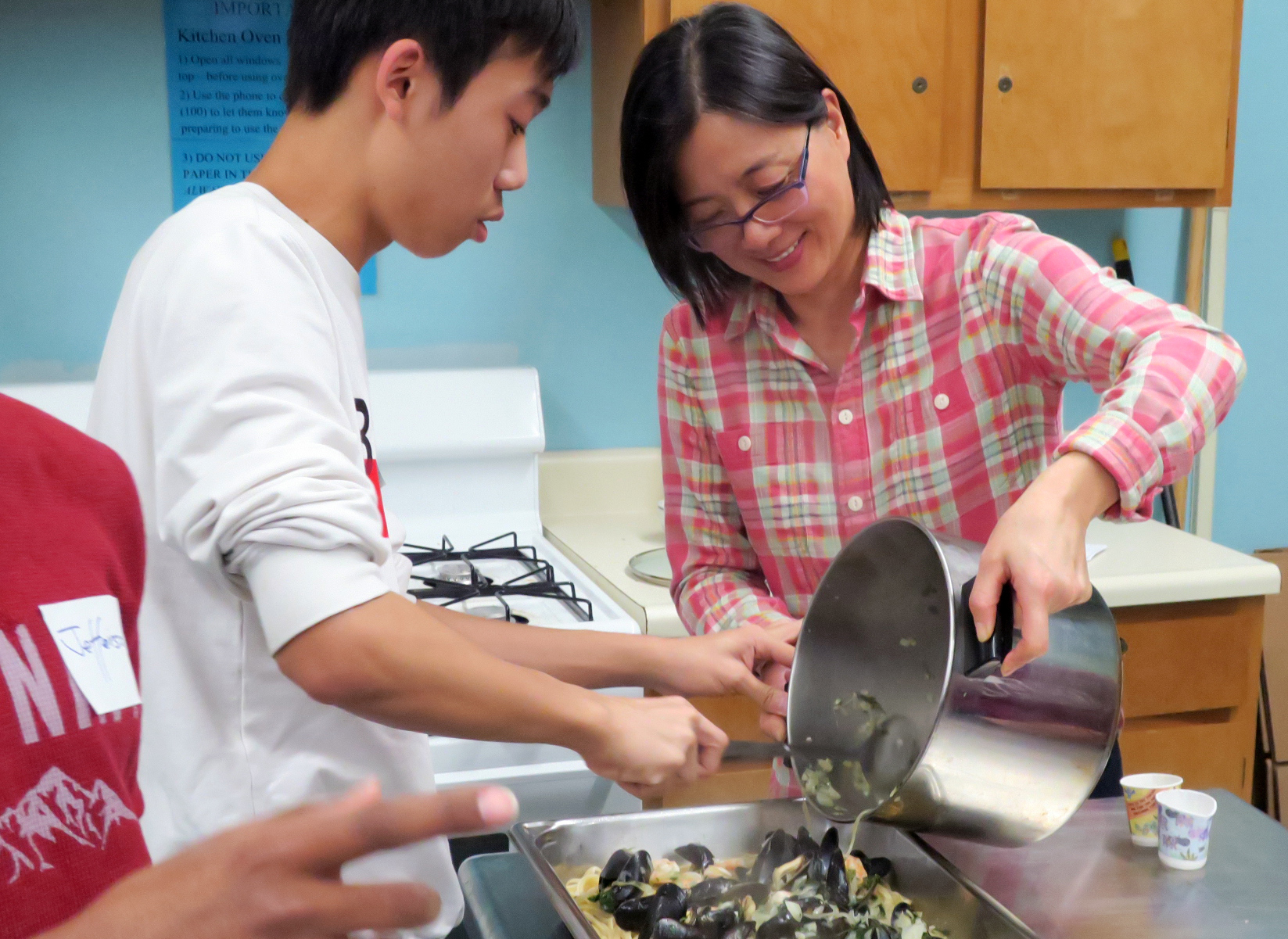Home Environment: A Driver of Behavior Change for Healthy Eating Patterns

This is the fourth article in a new series to illuminate key ‘drivers of behavior change’ around healthful eating. After 20 years of designing, evaluating and retooling curriculum to increase successful behavioral outcomes among all ages, we have identified 10 distinct behavior drivers. We are currently investigating these 10 drivers in a new study in collaboration with Columbia University’s Teachers College, Program in Nutrition. Our goal is to open a new area in the scientific literature that illuminates successful delivery and communication techniques. Over time as other practitioners and researchers add to this body of research, we can achieve consensus about what constitutes effective Teaching Kitchen curriculum.
Going back over 20 years ago, we were very aware that teaching nutrition hands-on through cooking skills with kids, families or adults would never really ‘stick’ unless we addressed participants’ home environment.
You can have the most engaging Teaching Kitchen (TK) sessions, but if you don’t give equal weight to your methods of translating the skills developed and practiced in the classroom as you’ve given to participants’ living environment, outcomes will fall short of your goals.
Your classroom makes things easy: the food is already there, the feeling of camaraderie makes healthy cooking fun, and the culinary support of trained facilitators encourages the most reluctant new cooks to stick with it.
But the proof is in what people will do at home in their daily lives. If they don’t know where to shop, how to feel as purposeful and joyful in their own kitchen, and/or engage the enthusiasm of their family members, the new habits will be tough to develop. Without addressing barriers outside the classroom, a few weeks after your TK program ends, the old habits of eating processed snacks and stopping to get fast food — instead of planning meals ahead and cooking — will creep back quickly. Your investment in your participants will be very short lived.
We can’t afford for this to happen!
Program design must include activities and exercises that support participants to:
- Shop confidently without fears that buying more whole foods will cost more
- Address how to make healthy, home-cooking acceptable and enjoyable for all family members
- Support meal planning in a way that new habits will make life simpler, not more difficult or time-consuming
- Create family-bonding rituals around food that families anticipate with a smile
In our experience, it’s not enough to simply discuss individuals’ personal and external barriers. Adults and youth need to take the time to develop new strategies and experiment with them as part of the TK program experience. In the end, what separates a great TK program from more traditional nutrition education are successful experiences that serve to provide positive associations with the desired behavior outcome. That’s easy in the classroom, more challenging outside the classroom – but addressing this effectively is key to achieving sustained outcomes.
To learn more about our evidence-based Teaching Kitchen programs, visit our Teaching Kitchen page or email me at lynn@familycookproductions.com.
Related Articles:
[SERIES] Drivers of Behavior Change for Healthy Eating Patterns:
Collaboration
Celebration
Challenge
[INFOGRAPHIC] 10 Drivers of Behavior Change for Effective Teaching Kitchens
